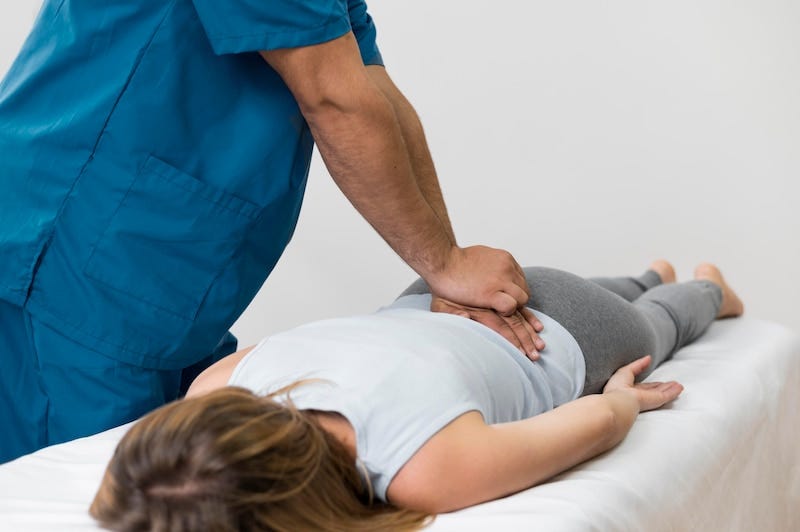
Chronic pain and injury can get troublesome, but let’s take a moment to talk about shockwave therapy. It’s a pain management for disorders relating to soft muscles, bones, and joints. As someone who has explored options in the healthcare field, you might be aware of how invasive certain procedures can be. Thankfully, this is not the case with shockwave treatment. This article will explore everything you need to know about the treatment that, surprisingly, isn’t too well known.
Firstly, What is Shockwave Therapy?
Shockwave therapy is one kind of treatment that does not enter the body. Washington State Health Care Authority states that this therapy is a non-invasive treatment that specifically uses acoustic waves to promote healing; it enhances blood circulation and tissue repair, thus becoming very effective in treating a lot of different chronic pains, such as tendinitis, tennis elbow, and muscle tension. For people troubled by persistent pain or injuries that persist despite common treatments, significant relief may be achieved with this form of therapy. Scheduling a session can be a very good alternative to more intrusive options.
Basically, for most people, traditional methods of pain management fail to do what is required in cases of injuries relating either to poor circulation or repetitive strain; this modality of treatment is less invasive and more specific in trying to simply hasten the natural healing processes of the body. Although other alternatives do exist, such as cryotherapy and laser treatments, this approach is generally a game changer for people looking for a therapeutic solution that will directly impact blood flow and reduce tissue inflammation in the areas concerned.
The Pros and Cons of Shockwave Treatment for Chronic Pain
Shockwave treatment may be a good option for those looking for a non-surgical method or want to avoid the intake of medicines for long periods. Its benefits are manifold, from pain relief and inflammation reduction to a fast recovery period. This technique’s ability to encourage the body to heal itself is the reason why so many patients and practitioners like it.
Some of the primary benefits include the fact this therapy is needle and knife-free, which means it’s less risky and allows for a quicker recovery. A lot of patients say that the pain decreases significantly after 1 or 2 sessions. Unlike many surgical approaches, it has low side effects, which can be a little bit of discomfort or redness.
Conditions Commonly Treated
The treatment has gained an excellent reputation in treating a series of disorders, most of which involve repetitive strain or overuse injuries. Conditions particularly helped by shockwave therapy include:
- Plantar Fasciitis: This is one of the most frequent heel pains, which responds to this treatment very well. It often reduces and, at times, completely negates the need for surgery, thus very often yielding a pain-free range of motion.
- Achilles Tendinopathy: This therapy decreases inflammation, thus supporting the repair processes of the Achilles tendon. Usually, it comes from overuse and therefore drastically affects one’s daily life. It dramatically relieves discomfort and can help recover lots of functions.
- Calcific Shoulder Tendinitis: Extracorporeal treatment of calcific deposits within the shoulder depends on its effect on calcification breakdown, giving rise to pain relief and the restoration of movement; this may prove very important in patients with resistant shoulder pain refractory to treatment.
- Carpal Tunnel Syndrome: This therapy is usefully effective in patients with carpal tunnel syndrome for pain relief and functional improvement. It reduces inflammation and heals the nerves and tissues concerned with the disease process. It is thus quite useful as a nonsurgical alternative to surgery.
- This modality also extends its uses as a treatment for hip pain and bursitis. Hippotherapy can help reduce inflammation and improve mobility; thus, it should help alleviate the suffering of persons afflicted with chronic hip pain.
Other tendon pathologies treated by this modality of treatment include tennis elbow, patellar tendinitis, and a host of other similar injuries where the condition fails to improve with conventional approaches. Treating the very things it works on, this therapy is a non-invasive, active alternative to rid oneself of chronic pain and return to normal activities.
How Long Does Treatment Take to Work?
There is no fixed time frame as all patients respond to treatment differently; however, that doesn’t erase the fact that some suffer from mild to severe signs, and within those signs, there is a process, and over time, patients begin to feel some improvement- and that might take longer than a few sessions. This also explains why some people have to go through 4–6 treatments to see optimal improvements. Each session is between fifteen to twenty minutes long, and a patient can resume their scheduled activities almost instantly. It’s effective for both acute and chronic pain while also enhancing the body’s natural healing.

Is This Type of Therapy Right for You?
Having a variety of treatments is crucial as not every person will respond to the same sort of therapy. In this case, is this the proper form of therapy for yourself? Shockwave therapy is appropriate for those who have failed to get better from using physical therapy, medications, or other therapies. This is also ideal for patients who do not wish to go through an invasive procedure, lose more organs, and do not want to spend much time on the treatment. The question of some surgery or steroid injections is completely ruled out. However, this can’t be used by people having a circulatory problem of any significant sort, especially a clotting disorder. The best answer to this question is a consultation with a healthcare professional.
Frequently Asked Questions
Q: What is the number of sessions someone has to undergo?
A: Yes, in patients, it may range from three to six sessions, depending on the response the patient depicts after undergoing the treatment.
Q: Is there any particular injunction that could be taken over because it may be dangerous?
A: Yes, as the treatment is non-invasive and safe, there are only slight side effects, including swelling or redness that lasts for a day, and the treatment generally takes about a week.
Q: Will it be painless?
A: Mostly yes, or if it is uncomfortable, then low levels of pain, which are bearable. The levels of pain can also be reduced in this session by a therapist if required, starting normally low.
The Science Behind Its Effectiveness
This modality of therapy has been one subject dealt with by various scientific journals that deal with different conditions that may arise from musculoskeletal disorders. Promotion of blood circulation and scar tissue metabolic activity increases the metabolic activity of cells, hence decreasing pain. The acoustic waves during the treatment have also been employed to improve the production of collagen necessary for tissue healing.
When other conventional means are null, shockwave treatment was noted to assist in pain management by targeting the area in which the patient is interested. It achieves this by improving the body’s natural processes, such as the immune system and tissue regeneration. As such, it is an effective method against a variety of conditions. Should this be the case with chronic pain or the desire to evade opening, this solution may work in therapy.








